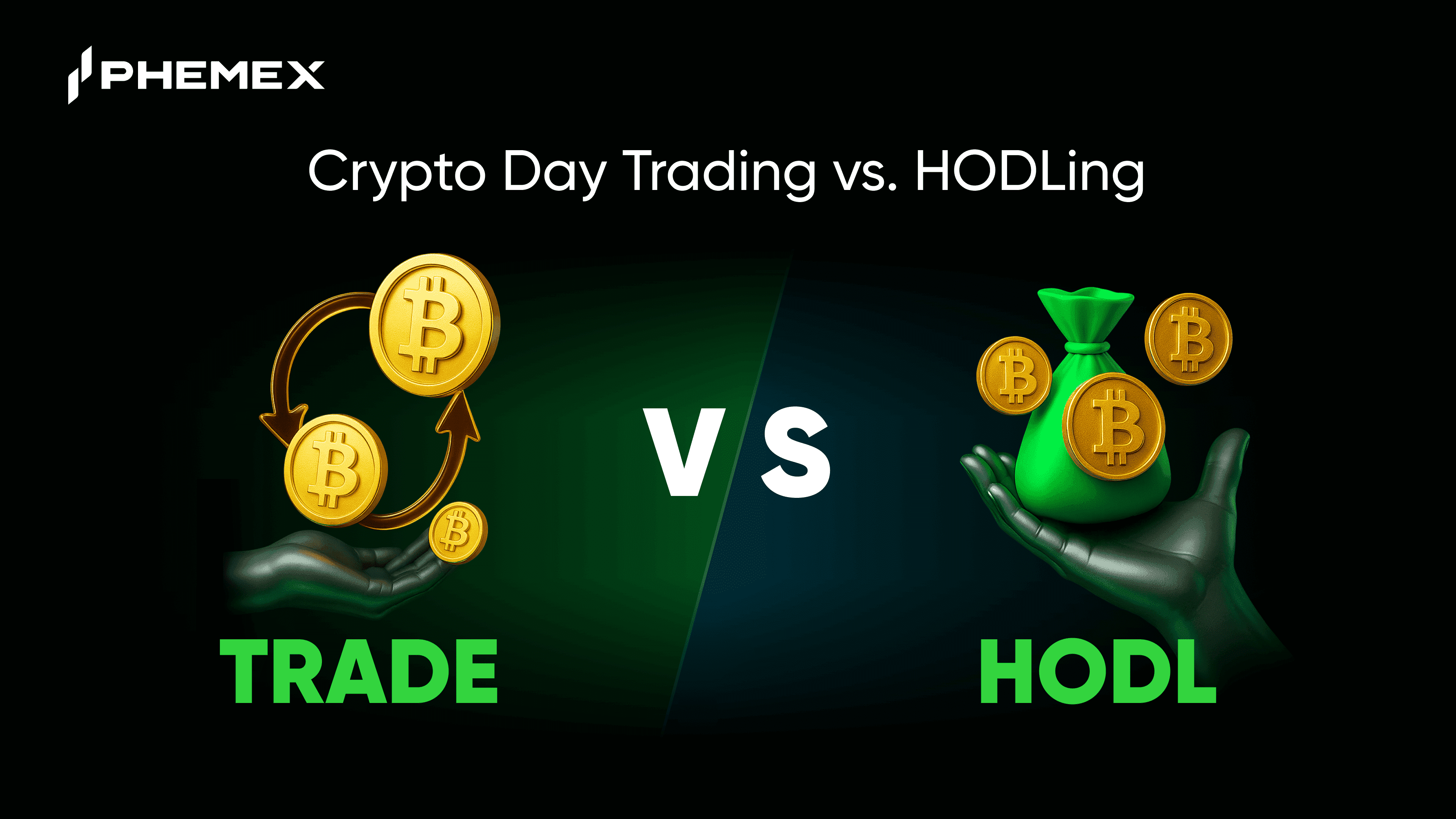Range trading is a valuable strategy in the crypto trader’s toolkit because it teaches you how to profit in those quieter times when the market isn’t hitting record highs or lows. Let’s recap its main points: It’s essentially buying low and selling high within a defined price range, over and over, until the range breaks. Range trading works by identifying clear support and resistance, executing disciplined entries/exits at those levels, and managing risk tightly with stop-losses.
Summary:
-
What it is: Range trading is a strategy where a cryptocurrency’s price moves between a defined high and low. Traders buy near the low (support) and sell near the high (resistance), profiting from the oscillations within that range.
-
How it works: This strategy relies on technical analysis to identify a price range. By trusting that prices will repeatedly bounce between support (the “floor”) and resistance (the “ceiling”), traders execute multiple small trades instead of one big bet. They set buy orders at support and sell orders at resistance, often using stop-loss orders just outside the range to manage risk.

Source: Investopedia
What Is the Range Trading Strategy?
Range trading is a straightforward yet powerful trading strategy. In simple terms, it means trading a coin when its price is bouncing between a consistent high and a consistent low. If you imagine price as a ping-pong ball, range trading is like watching that ball bounce between the floor and the ceiling. The “floor” is the support level (the low price where buyers keep coming in), and the “ceiling” is the resistance level (the high price where sellers repeatedly push the price down). Range-bound trading capitalizes on this back-and-forth motion.
In practice, range trading involves buying low and selling high within a defined range. For example, if Bitcoin has been trading between $30,000 and $40,000 for weeks, a range trader would buy near $30k (support) and sell near $40k (resistance), possibly doing this repeatedly. Unlike trend traders, range traders aren’t looking for a big breakout to $50k or a drop to $20k – they’re profitably playing the ping-pong game within the established boundaries.
This strategy rests on the concept of mean reversion – the idea that price will revert back toward the middle of the range rather than start a new trend. It’s a bit like a rubber band: pull it too far up (to resistance) and it snaps back down; pull it too far down (to support) and it snaps back up. Range traders aim to catch those snap-back moves. It’s a time-tested approach seen in all markets (stocks, forex, crypto), essentially formalizing the old adage “buy low, sell high.”
How Does It Work?
Range trading in crypto trading works by systematically exploiting the predictable highs and lows on a chart. Here’s a step-by-step breakdown of how to use the Range Trading strategy in practice:
-
Identify the Range: First, find a market that’s moving sideways. This means no strong up or down trend – instead, the price repeatedly bounces between two levels. You usually want at least two touches at the high and two at the low to confirm a range. For example, if Ethereum has hit around $1,600 twice and dipped to $1,400 twice over a few weeks, that suggests a $1,400–$1,600 range. Drawing horizontal lines on the chart at those levels can help visualize the channel.
-
Plan Entries at Support: Once you know the rough support (bottom) and resistance (top) of the range, plan to buy near support. You might set a buy order slightly above the support price – e.g., if support is $1,400, you could place a bid at $1,410. Why above? Because sometimes the price just misses the exact level. An oscillator indicator like RSI can help here: if RSI shows the asset is oversold at the support zone, it’s a green light that the support is likely to hold and a bounce could follow.
-
Plan Exits at Resistance: Similarly, decide your sell (or take profit) near resistance. If the identified ceiling is $1,600, you might set your sell order at $1,590 or $1,595 – just below the peak, in order to increase the chance your order fills. The goal is to exit before the crowd of sellers at $1,600 does.

-
Set Stop-Loss Orders: This is critical. No range lasts forever, and sometimes a breakout will smash through support or resistance without looking back. To protect yourself, always place a stop loss just outside the range.
-
Avoid the Middle: Discipline tells successful range traders to avoid trading in the middle of the range. The middle is a no-man’s land in which the price could go either way, and the risk/reward is unattractive. For instance, if our range is $1,400–$1,600 and the price is $1,500 (mid-range), buying there leaves you with $100 potential gain to the top but $100 potential loss to the bottom which is a 1:1 payoff at best, not counting fees.
-
Confirmation & Tools: While the concept is simple, using technical tools can boost success. Traders often look for confirmation signals that support or resistance will hold. Indicators such as Bollinger Bands can also help identify ranges; prices oscillating between the bands suggests a range-bound market. Additionally, setting price alerts on a platform like Phemex can be useful so you get notified when an asset hits your key levels.
-
Execution: When price does approach your levels, execute your plan decisively. Some traders place limit orders in advance at the support/resistance levels, so the trades trigger automatically (which is helpful if you’re not watching the market 24/7).
-
Rinse and Repeat: As long as the asset remains in the range, you can repeat this process, potentially multiple times. Each swing within the range is an opportunity. However, remain vigilant because markets are dynamic, and ranges can tighten, widen, or suddenly vanish.
When to Use This Strategy
Not every market environment is suited for range trading. Range trading works best in specific conditions where price movement is contained and predictable. Here’s when (and when not) to deploy this strategy:
-
Sideways or Consolidating Markets: The ideal backdrop for range trading is a market that lacks a strong trend. If Bitcoin or any crypto is in a clear bull trend (making higher highs every week) or a definitive bear trend (lower lows repeatedly), range-bound tactics will falter. You want to see a sideways trend – often after a big move up or down, markets will pause and digest, moving horizontally for a period. That’s your range trading window.
-
Moderate Volatility: Volatility plays a role. Too high volatility and ranges can be erratic or short-lived. Too low volatility and the range might be so tight there’s little profit to be made. Look for Goldilocks volatility - enough price movement to create profitable swings, but not so much that levels don’t hold. In crypto terms, established coins like Bitcoin or Ethereum often have moderate volatility phases suitable for range trading.
-
Clear Support/Resistance Levels: Only use range trading when you can clearly identify support and resistance. If a chart looks like a zig-zag with no obvious flat highs or lows, it might not be in a nice range.
-
Time Frame Considerations: Range trading is flexible. It works on various time frames – you can have a daily chart range that lasts months, or a 5-minute chart range that lasts an afternoon. Choose a time frame that suits your trading style. Day traders might range trade on hourly or 15-minute charts (catching intraday oscillations). Swing traders might focus on 4-hour or daily charts, where a range could persist for weeks.
-
Asset Selection: Not all crypto tokens range equally. Large-cap coins (like BTC, ETH) and high-volume pairs often exhibit cleaner ranges because so many market participants are watching the same levels (self-fulfilling support and resistance). These also have liquid markets where your orders can execute near the levels you want. In contrast, a very low market cap coin could be so illiquid or news-driven that it slices through supposed support/resistance without pause (making range trading tough).
-
Market Sentiment: Consider the broader context. Is the market awaiting some big news (like an SEC decision, major upgrade, etc.)? During those periods, a range can break unexpectedly once news hits. If you know a major event is imminent, range trading right before it might be riskier.
In summary, deploy the range trading strategy when the market is calm, clearly sideways, and with identifiable boundaries. Avoid it when the market is clearly trending or on the cusp of a breakout.

Source: Bitsgap
Risks & Drawbacks
No strategy is perfect. Range trading has its share of risks and drawbacks that traders must acknowledge and manage:
-
False Breakouts (Fakeouts): The biggest risk in range trading is thinking a range will hold when it’s actually about to break. A false breakout happens when price pokes above resistance or below support briefly, luring traders in (or stopping them out), then snaps back into the range. Managing this requires finesse: some traders give a bit more “buffer” on stops or wait for confirmation (like a few candles closing outside the range) before assuming a breakout is real.
-
Real Breakouts (Trend Resumption): Eventually, every range will end. If you’re on the wrong side of that breakout, losses can mount quickly. That’s why those stop-losses are essential. The drawback is that one breakout can wipe out several small gains if not controlled.
-
Opportunity Cost: While you’re playing a range, you might miss out on other opportunities. Your capital is tied up grabbing 5% moves while another coin might be trending 30% up. This FOMO can be a psychological drawback.
-
Psychological Challenges: It may seem counterintuitive, but slow, sideways markets can toy with your mind. The lack of excitement can lead to overtrading out of boredom, which would be a big mistake. Also, range trading requires counter-trend thinking in the short term (buy when price is dropping to support, sell when it’s rising to resistance). This goes against the grain of momentum, so it can be uncomfortable.
-
Comparison: Range vs. Trend Strategy: To illustrate the risk/reward difference, consider two scenarios: In a sideways month, a range trader might make several trades, e.g. four round trips of +5% each, totaling ~+20%. A trend trader in that same month might make near 0% if there was no trend to ride (or even lose if they forced trades). Here, range strategy shines. But in a strong uptrend month, a trend trader riding the wave could make +50%, while a range trader might have gotten stopped out with a small loss or taken tiny profits before the big move. This underscores that range trading is superb in the right context but underperforms when the market transitions to a trending phase. Seasoned traders sometimes use a hybrid approach: range trade during flat periods, and switch to trend-following when breakouts occur. That flexibility can mitigate the drawback of being married to one style.
Tips for Success with Range Trading
To maximize the potential of the range trading strategy, consider these tips and best practices used by experienced traders:
-
Always Use Stop-Loss and Take-Profit Orders: This cannot be stressed enough. A predefined stop-loss keeps your capital protected when a trade goes wrong. Likewise, setting take-profit (limit sell orders) at the resistance helps lock in gains without second-guessing. On modern exchanges like Phemex, you can easily set both a stop-loss and take-profit simultaneously when you enter a trade – a powerful way to automate your risk management.
-
Position Sizing & Capital Management: Only risk a small percentage of your capital on each range trade. Because range trading often involves multiple trades, you don’t want one loss to eat up all your wins.
-
Leverage Carefully: Many crypto exchanges offer leverage. While the idea of amplifying a 5% range move into a 50% profit by using 10x leverage sounds tempting, it equally amplifies losses and the chance of being stopped out by minor fluctuations.
-
Use Indicators for Confirmation: As mentioned, technical indicators can be your friends. Oscillators like RSI, Stochastic, or CCI are popular in range trading since they flash “overbought” at the top of a range and “oversold” at the bottom. Bollinger Bands are another handy tool: price hitting the upper band could coincide with range resistance (time to sell), and hitting the lower band with range support (time to buy).
-
Automate with Caution: If you find range trading suits you, you might consider using a simple trading bot or algorithm to execute the strategy, especially for long-lasting ranges. Traders on Phemex can easily set up grid trading bots that automatically buy and sell at preset interval levels within a range.
-
Use Quality Tools and Data: Make sure you’re charting on a reliable platform. If you’re trading on Phemex, for example, their interface allows drawing support/resistance lines and even paper trading on a testnet to try strategies safely.
-
Know When to Walk Away: Successful range traders know when not to trade. If the range starts getting unclear or too tight, or volume dries up, it might be time to step back.
By following these tips, you create a robust framework around the core range strategy. Range trading, done with discipline, can feel almost mechanical but in a good way. The more you can remove spur-of-the-moment guesswork and rely on your well-defined system, the more consistent your results are likely to be.

Richard Wyckoff - Source: Acme Trades
Where Did Range Trading Come From?
The range trading strategy isn’t a newfangled crypto invention as it’s rooted in classic trading wisdom. Long before Bitcoin, stock and commodity traders noticed that markets often move in cycles of consolidation. Prices would surge or drop, then plateau for a while as buyers and sellers jockeyed in a stalemate. This plateau is essentially a trading range.
Technical analysis pioneers like Richard Wyckoff in the early 20th century studied trading ranges (often calling them accumulation or distribution phases, depending on whether they precede an upward or downward move). The basic principle of buying near support and selling near resistance was probably practiced by traders on rice exchanges in Japan centuries ago, or by floor traders in early stock markets. In the context of crypto, range trading gained prominence as the market matured. In Bitcoin’s first wild years, it often skyrocketed or crashed. But as crypto became more mainstream, periods of sideways action became common. Today, range trading is part of the curriculum for any well-rounded trader.
Therefore, range trading came from the recognition that not all market phases are trending, and that those flat periods can be traded for profit. Crypto traders have eagerly adopted and refined this strategy, blending traditional techniques with the unique 24/7, volatile nature of digital assets.
Conclusion
In conclusion, range trading can be an excellent approach for those who master it: it instills patience, reinforces the importance of buying low/selling high, and can yield steady gains when markets are flat. Before diving in with real money, it’s wise to practice. Test the waters by paper trading or using a demo account (for example, Phemex offers a testnet environment) to execute range trades without risk. It’s almost an art form in turning market calmness into opportunity. So next time you see your favorite crypto stuck in a rut, don’t just scroll past in boredom because that sideways drift might just be your signal to deploy the range trading strategy. Trade safe and stay disciplined.








